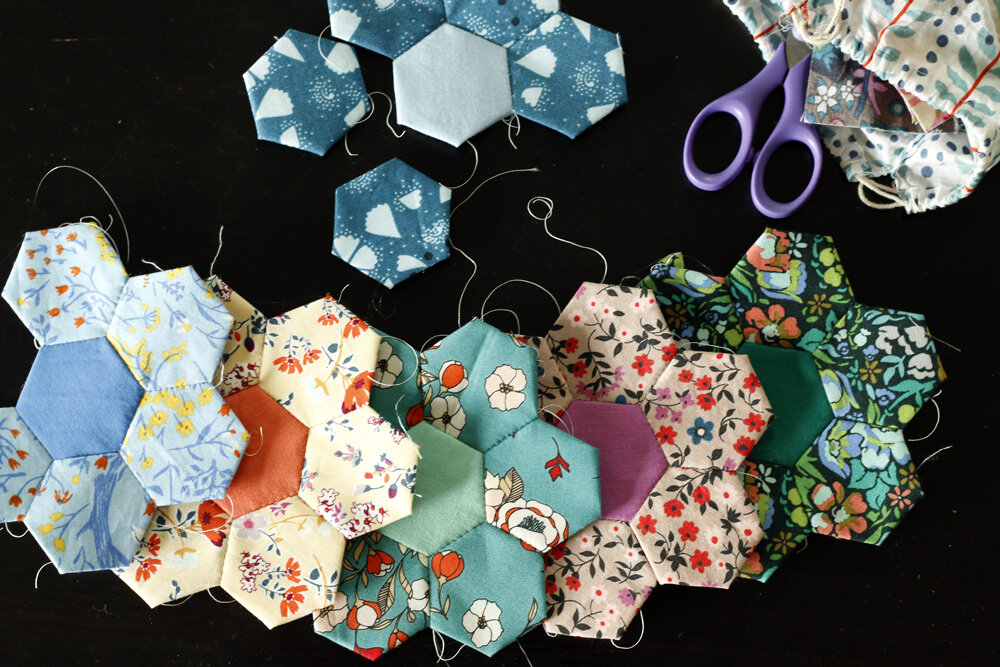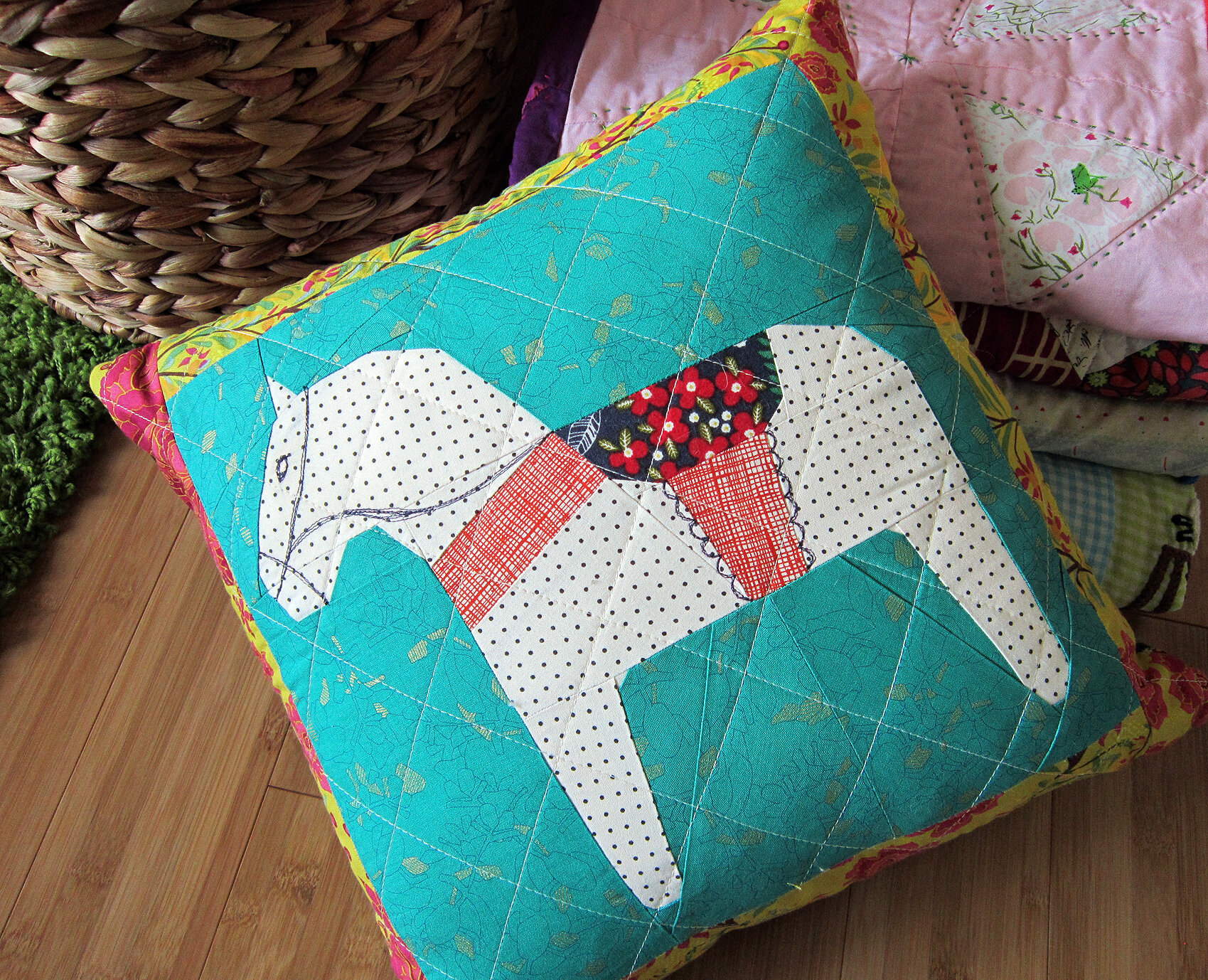is it Foundation Piecing, Paper Piecing or English Paper Piecing?
Some of the terms that we quilters throw around are less-than-obvious, don’t you agree? There’s foundation piecing, paper piecing (machine paper piecing?) and English paper piecing. And of course it doesn’t help that sometimes we use terms differently - it’s bound to happen.
I think the most hazy term here is foundation piecing. I mean, what really is the difference between foundation piecing and paper piecing? Is English Paper Piecing a type of foundation piecing? After all, you wrap the fabrics around a paper foundation. Hmm.
This week I shared this sketch on Instagram of a Dutch-inspired Penny Sampler. I’ve been working on this concept behind the scenes for a pattern club I’ll be releasing in 2020. It’s a machine paper piecing pattern club offering a customizable twist on my original Penny Sampler. I’ll be sharing some sewn blocks and details soon, so stay tuned!
Someone asked me “paper pieced or foundation pieced?” and I had to stop for a minute and sort that out in my head! In case you’re in the same boat, here is how they differ.
English Paper Piecing
This technique is for hand-sewn patchwork. You wrap fabric around paper shapes to form crisp shapes that are easier to sew together. After sewing the pieces together, you remove the papers from the back of the work.
English Paper Piecing (EPP) allows one to work with special shapes for patchwork, such as kites or octagons or the famous EPP hexagon. This technique is ideal for blocks with lots of y-seams. Y-seams are possible, but challenging to sew by machine. The free Kingfisher sew-along features English paper pieced hexagon flowers.
Machine Paper Piecing
This technique is often shorted to “paper piecing”, but that word “machine” helps distinguish it from EPP. Machine paper piecing (MPP) is sewn with a sewing machine. You must have a printed pattern to work with, since you sew on the lines of the pattern to create precise and detailed patchwork. After completing a block, you tear away the paper from the back of the work.
Machine paper piecing really shines when making picture-based blocks, like my Dala Horse design. It has a bit of a learning curve, so I prefer to teach MPP with both video and photos. Once you wrap your brain around the technique, it yields amazing accuracy even for beginners.
Machine paper pieced patterns are made entirely of straight lines. In order to create motifs that appear curved, many seams are required. When designing for my upcoming Penny Sampler Pattern Club, I avoid curved-shapes so that my patterns are less fiddly and more fun to sew.
Foundation Piecing
Ok, so what is foundation piecing? That depends upon who you ask! Some say foundation piecing is a broad category that includes the above techniques (or at least MPP). Other say foundation piecing refers to patchwork sewn with a foundation that is designed to remain, rather than be removed.
For example, often string blocks and spiderweb blocks are sewn with a muslin fabric foundation that provides visual clues when sewing. My Spiderweb Christmas Tree Skirt tutorial uses foundation piecing. These foundations are sometimes marked with one or two pencil lines, but generally it is their shape that provides visual guidance. In this sense, quilt-as-you-go could possibly be included in foundation piecing, with the batting serving as the foundation.
Confused much? I hope not! Feel free to ask any lingering questions.
I’m excited to show you more about my 2020 pattern club soon. If you’re not familiar, the Penny Sampler is a course I released years ago based on a nordic-inspired modern sampler quilt. This is my original version of the quilt, in icy colors.
In the original course we used multiple techniques to make our blocks. The 2020 Penny Sampler is based only on machine paper piecing, to make it more accessible. I’ve been busy designing lots of new picture blocks for the brand-new Dutch version of the quilt (opening sketch) and redesigning blocks for MPP from the original Penny Sampler.
Plus, I’m integrating geometric blocks that are ideally paper pieced into the pattern club. I’ve always wanted to sew classics like courthouse steps, the pineapple block and friendship braid. Each of these is perfect for machine paper piecing, which lends them an easy accuracy that’s super impressive.
More soon!














